
Stem Cell Research & Therapy
Scope & Guideline
Pioneering Research in Regenerative Therapies
Introduction
Aims and Scopes
- Stem Cell Characterization and Mechanisms:
Research articles often explore the biological characteristics, differentiation potential, and mechanisms of action of various types of stem cells, including mesenchymal stem cells (MSCs), induced pluripotent stem cells (iPSCs), and other progenitor cells. - Therapeutic Applications of Stem Cells:
The journal publishes studies on the clinical applications of stem cells in treating a variety of diseases and conditions, such as autoimmune disorders, cardiovascular diseases, and neurological conditions, emphasizing their potential in regenerative medicine. - Extracellular Vesicles and Secretome:
A significant focus is placed on the role of stem cell-derived extracellular vesicles and secretomes, highlighting their therapeutic potential in modulating immune responses, enhancing tissue repair, and their applications in drug delivery. - Innovative Techniques in Stem Cell Research:
The journal features advancements in methodologies for stem cell isolation, culture, and differentiation, including bioprinting, 3D culture systems, and genetic engineering techniques like CRISPR/Cas9. - Interdisciplinary Approaches in Stem Cell Therapy:
Research often integrates approaches from molecular biology, immunology, and bioengineering to address challenges in stem cell therapy, including issues related to cell survival, engraftment, and immune modulation.
Trending and Emerging
- Regenerative Medicine and Tissue Engineering:
There is a growing emphasis on the use of stem cells in regenerative medicine and tissue engineering, with numerous studies focusing on their ability to repair and regenerate damaged tissues and organs, particularly in orthopedic and cardiovascular applications. - Stem Cell-Derived Exosomes and Their Therapeutics:
Research on exosomes derived from stem cells is rapidly increasing, highlighting their potential as a cell-free therapeutic strategy for various diseases, including cancer, cardiovascular diseases, and neurodegenerative conditions. - Immunomodulatory Properties of Stem Cells:
The immunomodulatory effects of stem cells, especially in the context of inflammatory diseases and transplant rejection, are gaining attention, as studies explore how stem cells can modulate immune responses to enhance therapeutic outcomes. - Personalized Stem Cell Therapies:
There is a trend towards personalized approaches in stem cell therapies, including the use of patient-derived iPSCs to create tailored treatments for individual patients, particularly in genetic disorders and cancer. - Stem Cell Therapy for COVID-19 and Other Acute Conditions:
The journal has seen an increase in research focusing on the application of stem cell therapies in treating COVID-19 and other acute conditions, exploring their potential in immune modulation and tissue repair.
Declining or Waning
- Traditional Stem Cell Sources:
There has been a noticeable decrease in studies focusing on traditional sources of stem cells, such as bone marrow and embryonic stem cells, as research increasingly shifts towards more versatile and ethically favorable sources, such as iPSCs and MSCs from various tissues. - Basic Stem Cell Biology:
Research that solely focuses on basic stem cell biology without direct clinical applications appears to be declining. The trend is moving towards more translational studies that emphasize therapeutic implications and clinical outcomes. - End-of-Life Applications of Stem Cells:
The exploration of stem cell therapies for end-of-life conditions has decreased, as the journal emphasizes more on regenerative applications and therapeutic interventions that can significantly improve patient outcomes.
Similar Journals
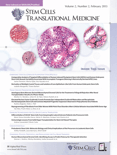
Stem Cells Translational Medicine
Pioneering Innovations in Stem Cell ResearchStem Cells Translational Medicine, published by Oxford University Press, is a leading open-access journal that has been at the forefront of stem cell research since its launch in 2012. With an impressive impact across various categories, it occupies Q2 in Cell Biology and is highly recognized in Q1 for both Developmental Biology and Miscellaneous Medicine in 2023. Its strong Scopus rankings highlight its significance in the fields of Biochemistry, Genetics, and Molecular Biology, achieving an outstanding percentile ranking of 93rd in Developmental Biology. The journal provides a pivotal platform for researchers, professionals, and students to publish and access cutting-edge findings that contribute to the understanding and application of stem cell technology. With a commitment to disseminating high-quality scientific knowledge, Stem Cells Translational Medicine plays a vital role in advancing research and innovation within the rapidly evolving landscape of regenerative medicine.

Current Stem Cell Research & Therapy
Exploring Innovative Therapies for Tomorrow's MedicineCurrent Stem Cell Research & Therapy, published by Bentham Science Publishers Ltd, is a leading journal dedicated to advancing the field of stem cell research. With an ISSN of 1574-888X and an E-ISSN of 2212-3946, this journal has been a valuable resource since its inception in 2006 and continues to broaden its scope through 2024. Recognized in the Q2 quartile for Medicine (miscellaneous) and ranked in the 66th percentile among its peers, the journal plays a crucial role in disseminating high-quality, peer-reviewed research that explores both the therapeutic and biological implications of stem cells. Located in the United Arab Emirates, Current Stem Cell Research & Therapy embraces a global audience of researchers, professionals, and students, providing a vibrant platform for discourse and innovation. While the journal offers subscription-based access, it remains committed to enhancing the scientific community's understanding of stem cell therapy and its applications across various medical fields.
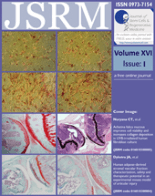
Journal of Stem Cells & Regenerative Medicine
Pioneering Research for a Healthier TomorrowThe Journal of Stem Cells & Regenerative Medicine is a leading publication dedicated to the advancing field of stem cell research and regenerative medicine. Established in India and published by JOURNAL STEM CELLS & REGENERATIVE MEDICINE, this Open Access journal has been available since 2007, providing researchers and practitioners with free and unrestricted access to high-quality articles. With an ISSN of 0973-7154, the journal is indexed in Scopus, featuring a wide array of topics and insights into biochemistry, biotechnology, cell biology, and molecular biology, as denoted by its relevant quartile rankings. This journal is committed to bridging the gap between laboratory research and clinical applications, making significant contributions to the scientific community. The convergence of innovative studies from 2010 to 2024 positions it as an invaluable resource for those looking to stay at the forefront of stem cell and regenerative medicine research.

Russian Journal of Developmental Biology
Unraveling the mysteries of developmental biology.The Russian Journal of Developmental Biology, published by PLEIADES PUBLISHING INC, serves as a significant platform for researchers and professionals engaged in the field of developmental biology. With the ISSN 1062-3604 and E-ISSN 1608-3326, this journal focused on intricate biological processes and dynamic developmental mechanisms from 2005 until 2017. Although its coverage is currently discontinued in Scopus, it remains notable for its contribution to understanding the pivotal roles of biochemistry and molecular genetics within the context of development. As a publication situated in the competitive quartiles of the field and boasting an influential Scopus rank of #77 out of #78, it has made a unique mark in developmental studies. Researchers and academics seeking to enhance their knowledge of historical advancements in the discipline will find the journal a valuable resource, even as it navigates the transition away from active publication.

Stem Cells International
Pioneering Discoveries in Cellular RegenerationStem Cells International is a premier open access journal published by HINDAWI LTD, focusing on the rapidly evolving field of stem cell research. With an ISSN of 1687-966X and E-ISSN 1687-9678, this journal has been a vital resource since its inception in 2010, showcasing innovative studies and breakthroughs up to 2024. Positioned in Q3 in Cell Biology and Q2 in Molecular Biology for 2023, as well as well-ranked in the Scopus database, the journal serves as an essential platform for researchers, professionals, and students dedicated to exploring the implications of stem cell technology in regenerative medicine and biological research. The open access model ensures wide accessibility, fostering collaboration and knowledge-sharing across the scientific community, making it a cornerstone in advancing the understanding and application of stem cell science.
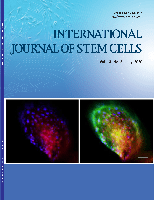
International Journal of Stem Cells
Pioneering Discoveries in Developmental BiologyThe International Journal of Stem Cells is a distinguished peer-reviewed journal dedicated to advancing the field of stem cell research. Published by the Korean Society for Stem Cell Research, this journal has established itself as a vital source of high-quality research since its inception in 2008. Operating under the ISSN 2005-3606 and E-ISSN 2005-5447, the journal caters to a global audience, featuring works that span a diverse array of topics within Cell Biology and Developmental Biology. It is noteworthy that as of 2023, the journal is ranked Q3 in Cell Biology and Q2 in Developmental Biology, highlighting its growing influence and credibility in the scientific community. Given its commitment to facilitating open scientific communication, it is crucial for researchers, professionals, and students to engage with the rigorous research published in this journal as it profoundly impacts the understanding and application of stem cell science. With accessibility to a wealth of innovative studies, the International Journal of Stem Cells remains an indispensable resource for anyone interested in the transformative potential of stem cell research.

Current Stem Cell Reports
Pioneering Discoveries in Molecular and Genetic BiologyCurrent Stem Cell Reports, published by Springer Heidelberg, is an esteemed academic journal that has emerged as a pivotal resource in the fields of Cell Biology, Developmental Biology, Genetics, and Molecular Biology. Since its inception in 2015, this journal has consistently contributed to the evolving discourse on stem cell research and its applications, providing a platform for innovative studies and reviews through 2024. With a notable impact indicated by its quartile rankings—Q2 in Developmental Biology and Genetics, and Q3 in Cell Biology and Molecular Biology—it engages a diverse audience of researchers, professionals, and students who seek high-quality, accessible research insights. Although offering a traditional access model, the content remains vital for those invested in understanding the implications of stem cell advancements. Located in Switzerland and operating from the heart of Heidelberg, this journal aspires to bridge gaps in knowledge and stimulate collaboration in the burgeoning field of stem cell science.
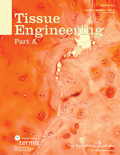
Tissue Engineering Part A
Empowering Scientists to Redefine Regenerative MedicineTissue Engineering Part A is a prestigious peer-reviewed journal published by MARY ANN LIEBERT, INC that focuses on innovative research and advancements within the field of tissue engineering and regenerative medicine. Since its inception in 2008, this journal has played a critical role in disseminating cutting-edge findings that bridge the gap between laboratory research and clinical application, underscoring its significance in the scientific community. With a diverse scope encompassing biochemistry, bioengineering, biomaterials, and biomedical engineering, the journal ranks notably in the Scopus database, holding a Q2 quartile status across multiple categories, thus reflecting its high impact on ongoing research and professional practice. For researchers, professionals, and students, Tissue Engineering Part A serves as an invaluable resource, offering insights into the latest methodologies and breakthroughs that drive the future of healthcare and therapeutic strategies. While primarily a subscription-based journal, it ensures that vital research is accessible to a broad audience of scientists and engineers committed to advancing the life sciences.

Cell Journal
Fostering Global Collaboration in Cell ResearchCell Journal is a leading interdisciplinary publication in the fields of Cell Biology, Developmental Biology, Molecular Biology, and Reproductive Medicine, published by ROYAN INST since its inception as an open-access journal in 2007. With an ISSN of 2228-5806 for print and 2228-5814 for electronic editions, it provides a vital platform for researchers and professionals to disseminate innovative findings and insights that shape our understanding of cellular processes and reproductive sciences. The journal boasts an impressive Scopus ranking, achieving a Q3 position in both Molecular Biology and Reproductive Medicine, highlighting its significance in the academic community. Situated in Tehran, Iran, Cell Journal encourages global collaboration through its accessible content, making cutting-edge research available to a diverse audience. As it converges from 2011 to 2024, the journal continues to emphasize the importance of thorough scientific inquiry, fostering advancements that drive both theoretical frameworks and practical applications in cell science.
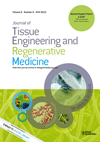
Journal of Tissue Engineering and Regenerative Medicine
Transforming healthcare through cutting-edge research in tissue engineering.Journal of Tissue Engineering and Regenerative Medicine, published by WILEY, stands as a pivotal platform in the fields of biomaterials, biomedical engineering, and regenerative medicine. With an ISSN of 1932-6254 and an E-ISSN of 1932-7005, this journal, based in the United Kingdom, has consistently delivered high-quality research since its inception in 2006, converging critical insights through 2024. With an impressive citation profile reflected in its Scopus rankings—specifically a rank of #58 in Medicine and #75 in Biomedical Engineering—the journal is acknowledged for its substantial impact, as demonstrated by its competitive quartile standings in 2023. Notably, it maintains a Q3 ranking in Biomaterials and Q2 in both Biomedical Engineering and Medicine (miscellaneous), showcasing its influence and relevance in the rapidly evolving interplay between engineering and medicine. The journal serves as a vital resource for researchers and practitioners aiming to stay abreast of innovations and breakthroughs in regenerative therapies, tissue scaffolds, and biomaterials. While not an open-access publication, it fosters academic dialogue and knowledge dissemination that is crucial for advancing the field.